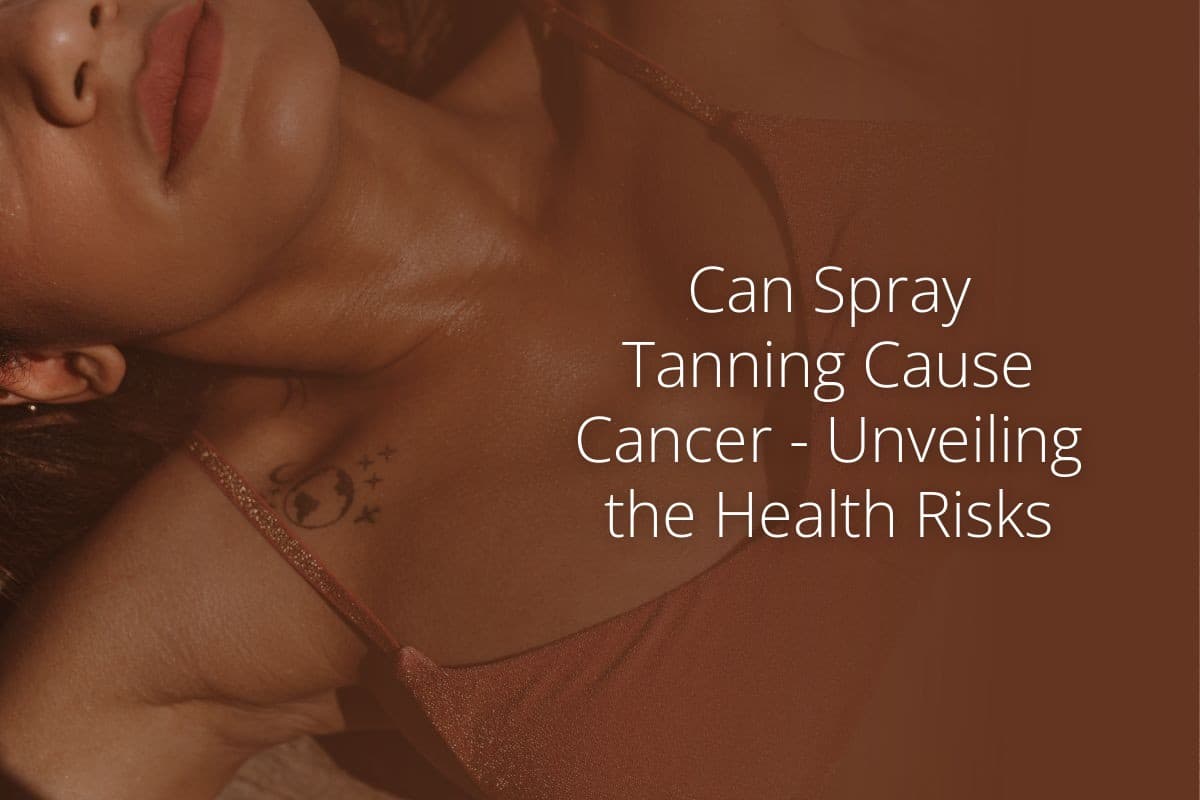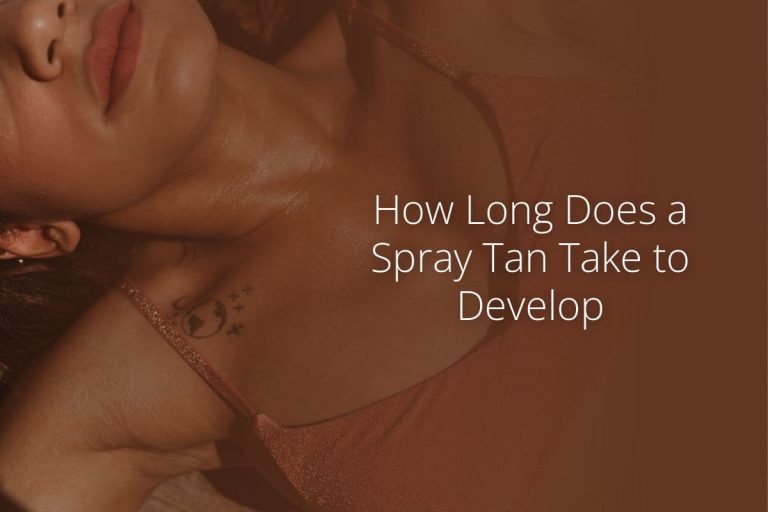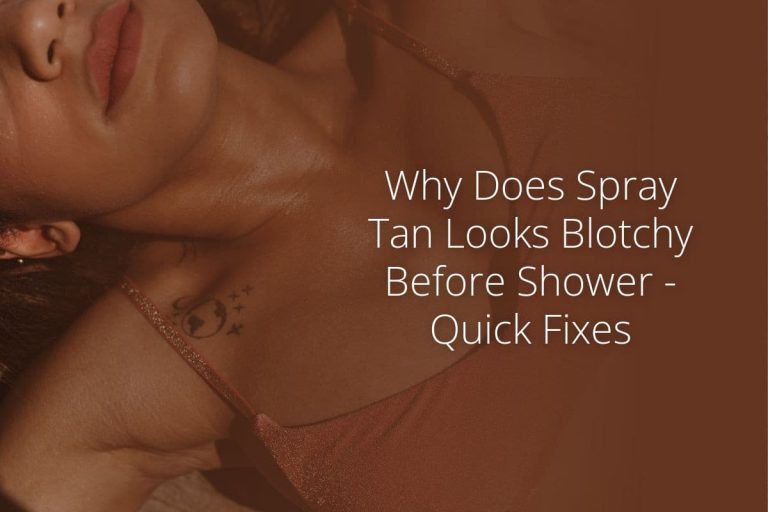
Spray tanning has become a popular alternative for those who want to achieve a sun-kissed glow without the risks associated with sunbathing or traditional tanning beds. However, with its growing popularity, questions have arisen about the safety of spray tanning and its potential health risks. One concern that often comes up is whether spray tanning could cause cancer.
Spray tanning uses a compound called Dihydroxyacetone (DHA) to darken the skin. It reacts with the dead skin cells on your body’s surface, causing them to darken temporarily. This process does not involve any UV radiation, which is a known carcinogen linked to skin cancer. Therefore, spray tanning is generally considered safer than sunbathing or using a tanning bed when it comes to the risk of skin cancer.
However, while spray tanning might be a safer alternative, it’s crucial to remember that it’s not entirely risk-free. For instance, there are concerns about inhaling or ingesting DHA during a spray tan session, which could potentially lead to health issues. Also, a spray tan doesn’t provide any protection against UV rays from the sun or tanning beds. Therefore, it’s still essential to use sunscreen and take other sun safety measures after getting a spray tan.
We’ll also debunk some misconceptions along the way. From DNA damage to free radicals, we’ll explore whether those bronzed glows come with hidden dangers or if they’re simply harmless chemical concoctions containing DHA.
Understanding Spray Tans: How Do They Work?
Spray tanning, which uses DHA, has gained popularity as a safer alternative to sunbathing or using tanning beds. But can spray tanning cause cancer? Let’s dive into how these tans with dha work and find out.
- Application process: Spray tans involve misting a solution containing DHA onto the skin’s surface. This fine mist ensures even coverage, giving you a natural-looking tan without harmful UV rays. The mist contains DHA, which provides the tan effect.
- Temporary effect: Unlike traditional tanning methods, spray tans only affect the outermost layer of skin. The color change is temporary and gradually fades away as your skin naturally exfoliates.
- DHA as key ingredient: Dihydroxyacetone (DHA) is the active ingredient in most spray tan solutions. It interacts with amino acids in the outer layer of your skin, creating a tan-like appearance within hours of application.
- Customization options: One of the advantages of spray tans is the ability to customize your shade and intensity. Whether you prefer a subtle glow or a deep bronze, there are various options available to suit individual preferences.
Spray tanning offers a convenient way to achieve that sun-kissed look without exposing yourself to harmful UV radiation. By understanding how these tans work, you can make an informed decision about their safety and effectiveness. Remember, always consult with professionals or dermatologists if you have specific concerns about your skin type or any potential risks associated with spray tanning.
So go ahead and embrace that bronzed glow without worrying about cancer-causing effects!
Exploring the Safety of Spray Tanning and Potential Risks
Spray tanning has gained popularity as a safer alternative to sunbathing or using tanning beds. While it is generally considered a safe procedure when used as directed, there are some potential risks and precautions to be aware of.
Generally safe procedure
- Regulatory bodies have deemed spray tanning as safe when proper guidelines are followed.
- The active ingredient in most spray tan solutions, Dihydroxyacetone (DHA), is approved by the FDA for external use.
Allergic reactions possible
- Some individuals may experience allergic reactions or sensitivities to certain ingredients in spray tan solutions.
- It is important to check the product’s ingredients list and perform a patch test before full-body application.
Inhalation risks minimized
- Proper ventilation during the application process helps minimize potential respiratory concerns.
- Spray tanning booths often have built-in ventilation systems to ensure adequate airflow.
Precautions for pregnant women advised
- Limited studies suggest caution for pregnant women due to potential absorption risks.
- Consultation with a healthcare professional is recommended before undergoing spray tanning during pregnancy.
The Science Behind Spray Tan Mechanics
Spray tans are a popular choice for achieving a bronzed glow without exposing the skin to harmful UV rays. But, can spray tanning cause cancer? Let’s delve into the science behind the mechanics of spray tans to find out more.
Chemical Reaction Explained
The key ingredient in spray tans is DHA, a sugar compound that reacts with amino acids present in the outermost layer of the skin, known as the epidermis. This chemical reaction produces melanoidins, which temporarily darken the skin, giving it a sun-kissed appearance.
Epidermal Involvement Only
Studies have shown that this chemical reaction occurs exclusively on the epidermis and does not penetrate beyond its outer layer. Therefore, any potential effects are limited to this superficial level of the skin.
No Penetration Beyond Stratum Corneum Layer Observed
Research conducted so far has not observed any penetration of DHA beyond the stratum corneum layer, which is composed mainly of dead skin cells. This further supports the notion that spray tanning does not pose a risk of deeper tissue exposure or systemic effects.
Exfoliation Leads to Fading Effect Over Time
As our skin naturally sheds dead cells through exfoliation, spray tan color gradually fades over time. Regular exfoliation helps accelerate this process and ensures an even fading effect.
Can Spray Tanning Cause Cancer? Examining the Evidence
Spray tanning has gained popularity as a safer alternative to traditional tanning methods, but concerns about its potential link to cancer have also emerged. Let’s take a closer look at the evidence surrounding this topic.
Lack of direct evidence linking spray tanning to cancer
Numerous studies have been conducted to investigate the connection between spray tanning and cancer. However, no conclusive evidence has been found to establish a direct causal relationship between the two. While this is reassuring, it is important to note that further research is still needed for a more definitive answer.
Potential indirect risks
Although there is no direct evidence of spray tans causing cancer, some concerns exist regarding potential indirect risks. One such concern involves the inhalation of spray tan solution during the application process. The chemicals present in these solutions may pose certain health risks if inhaled regularly or in large quantities. Prolonged exposure to harmful chemicals used in the formulation of spray tan products could potentially have adverse effects on skin health.
UV radiation absence
Unlike traditional tanning methods that involve exposure to harmful UV rays, spray tans do not expose individuals to this type of radiation. This absence of UV radiation reduces one significant risk factor associated with skin cancer development. By providing an alternative means of achieving a sun-kissed glow without UV exposure, spray tans offer a safer option for those concerned about skin cancer.
Continued research needed
While current studies provide some insights into the safety of spray tanning, continued research is necessary for a more comprehensive understanding of any potential long-term effects. Ongoing investigations aim to shed light on various aspects related to spray tan usage and its impact on human health.
Safe Alternatives: Achieving a Healthy Tan without Risks
Sunless tanning options provide a safer alternative to traditional methods like sunbathing or using tanning beds. With the increasing awareness of the potential risks associated with UV exposure, it’s important to explore other ways to achieve a beautiful tan. Here are some safe alternatives and tips to consider:
Sunless Tanning Products
A wide range of self-tanning products is available in the market, offering a convenient way to achieve a tan without harmful UV rays. These products come in various forms such as lotions, creams, and mousses. By applying them evenly on the skin, you can enjoy a natural-looking tan without stepping foot in a tanning bed or spending hours under the sun.
Professional Assistance for Best Results
While self-tanning products can be used at home, seeking professional assistance can ensure optimal results and safety precautions. Many salons offer spray tanning services performed by trained professionals who can help you achieve an even and streak-free tan. They have the expertise to choose the right shade for your skin tone and apply it flawlessly.
Embrace Your Natural Complexion
Instead of striving for an artificial tan, embracing your natural skin tone is always an option. Promoting self-confidence and accepting your unique complexion can be empowering. By using broad-spectrum sunscreen regularly, you can protect your skin from harmful UV rays while maintaining its health and radiance.
Making Informed Choices for Your Skin’s Health
Now that you have a better understanding of how spray tans work and the potential risks involved, it’s time to make informed choices for your skin’s health. While there is no conclusive evidence to suggest that spray tanning directly causes cancer, it’s important to take precautions and consider safer alternatives.
To protect your skin, always choose a reputable salon or technician who uses high-quality products. Ask about the ingredients in the spray tan solution and ensure they are FDA-approved. Consider doing a patch test on a small area of your skin before getting a full-body spray tan to check for any adverse reactions.
Remember, achieving a healthy tan doesn’t have to involve risks. There are safe alternatives available such as self-tanning lotions or creams that can give you a natural-looking glow without exposure to harmful UV rays or potentially risky chemicals. Take care of your skin and make choices that prioritize its health.
FAQs
Can I get a spray tan if I have sensitive skin?
If you have sensitive skin, it’s essential to be cautious when considering a spray tan. Some individuals with sensitive skin may experience irritation or allergic reactions to certain ingredients in the spray tan solution. It is recommended to do a patch test before getting a full-body spray tan to assess any potential adverse reactions.
How long does a spray tan last?
The duration of a spray tan can vary depending on several factors such as your skin type, aftercare routine, and the quality of the product used. On average, most spray tans last between 5-10 days. To extend the lifespan of your tan, moisturize regularly and avoid activities that may cause excessive sweating or exfoliation.
Will my spray tan protect me from the sun?
No, a spray tan does not provide any protection against harmful UV rays from the sun. It is crucial to continue practicing sun safety measures even if you have a spray tan. Apply sunscreen with an appropriate SPF and seek shade during peak sun hours to protect your skin from sun damage.
Can I still go swimming with a spray tan?
While it’s generally safe to swim with a spray tan, prolonged exposure to water can cause the tan to fade more quickly. Chlorine in pools or saltwater in the ocean may also contribute to the fading process. To maintain your spray tan for longer, try to minimize time spent submerged in water and pat dry instead of rubbing after swimming.
How soon can I shower after getting a spray tan?
The recommended time before showering after a spray tan varies depending on the product used and salon guidelines. Typically, it is advised to wait at least 6-8 hours before rinsing off the excess solution. Follow the instructions provided by your technician or consult with them for specific guidance tailored to your spray tan.






